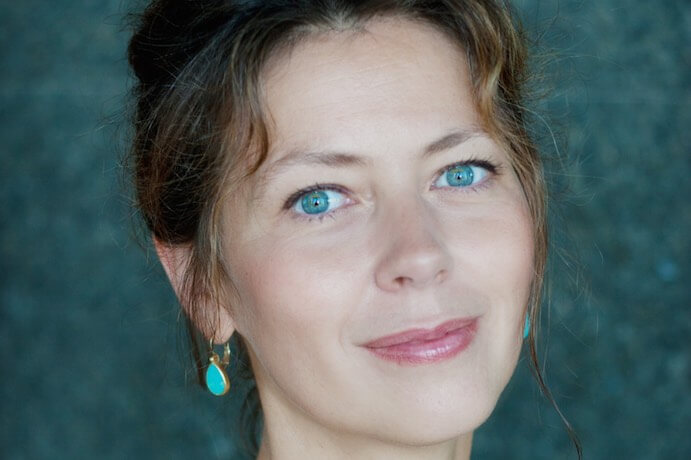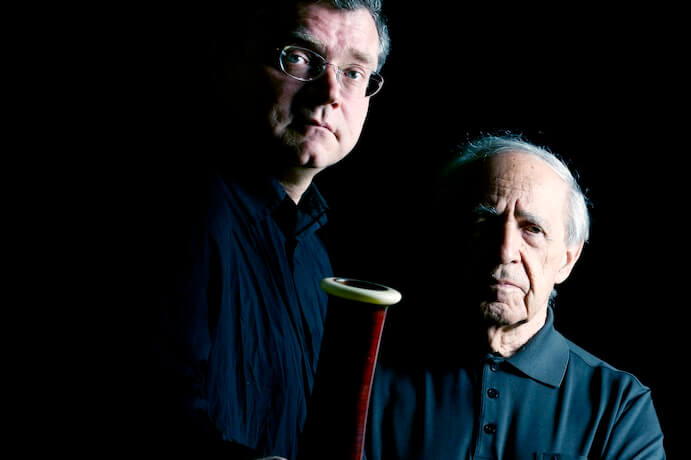Pierre Boulez led a multi-faceted career, but those of composer and conductor made him a household name among contemporary musicians and music lovers. Despite what one may think of this controversial figure–whether his legacy is as a conductor or as a composer, for example–there is no doubt he is one of the leading musical figures of the last fifty years. Pascal Gallois, who worked with Boulez in the 1980s, combines his talents as bassoonist and conductor in a program of Boulez’s most influential and approachable works. Gallois’ goal, as he writes in the accompanying notes, “These recordings of Le Marteau sans maître, Eclat, and Dialogue de l’Ombre Double will allow listeners to appreciate the complexity and compositional diversity of Pierre Boulez as well as the immensity of his musical legacy.” That goal was certainly achieved in this new recording of these three major works with the International Contemporary Ensemble and mezzo-soprano Katalin Karolyi on the Stradivarius label. This is a fine new assessment of this fascinating artist, boosting the cause for a renewed appreciation of Boulez’s compositional legacy.
Strongly serial and complex in structure, Le Marteau sans maître was hailed as a masterpiece of the avant-garde at its 1955 premiere. The composition is structured as three interwoven cycles, “L’Artisanat furieux,” “Bourreaux de solitude,” and “Bel Édifice et les pressentiments,” totaling nine movements. Each cycle is based on one of the three sung texts with the remaining instrumental movements as “Commentaire,” an early example of Boulez’s use of mirrors and doubles to structure a multi-movement work. It is indicative of the formidable rhythmic complexity that, despite requiring only seven musicians, (alto flute, viola, guitar, three percussionists, and alto voice) the work is never performed without a conductor. The tone row is manipulated in a bewildering array of phrases and formulas. Boulez generates a surprising amount of rhythmic propulsion and evocative percussive sonorities in music that is largely without any sense of a regular beat.

Without care and attention, the limited forces and the profusion of high pitched mallet percussion can render Le Marteau into mere disjointed noise. ICE takes the needed care, relishing the Asian influences, bringing out the often ephemeral but real lyricism of the work a bit, but never losing the underlying complexity and preciseness of the score that makes Boulez a challenge even for the most discerning ear. This performance of Le Marteau sans maître is not a chore to listen to, but rather a colorful, engaging, and discovery filled pleasure. In length, this recording is very much like Boulez’s own on Sony and his supervised recording on DG. The difference is in the details. This Marteau is glitteringly precise, transparent in texture and totally musical. Katalin Karolyi is every bit a match to Yvonne Minton on Sony and Hilary Summers on DG; her voice warm with clear, excellent diction. Unfortunately, the notes do not supply any text, but an Internet search can supply if needed.
Boulez frequently was not satisfied with a composition, often re-evaluating and creating new versions sometimes years after the previous revision. (Marteau largely escaped this.) Thus, it is no surprise that Dialogue de l’Ombre Double (1985, written in celebration of Luciano Berio’s 60th birthday) was originally for clarinet and electronics but arranged by Boulez and Gallois for bassoon in 1995. Although definitively performed by Gallois who worked closely with Boulez, l’Ombre works best in the clarinet version. The clarinet’s clearer, more versatile sonority brings out the suable complexities of the score.

While Le Marteau sans maître can challenge even the most ardent listener and admirer, Éclat is more straight forward and compact, thus it is one of Boulez’s more accessible works. The expanded ensemble (flute, English horn, trumpet, trombone, harp, piano, mandolin, and percussion) allows for a more sustained, expressive sound using long lines in contrast to the short, percussive sonority of Marteau. ICE’s performance is sharp and focused, and compares well with the Boulez led performance on Sony. If I lean toward ICE’s performance, it is because it is a more musical, macro view of the work rather than Boulez’s micro-detailed approach. Both are legitimate, but ICE again makes it musical, not mechanical.
Stradivarius’ engineers provide splendid, clear, and ringing sonics that assist in providing the transparent sonorities that are so essential to the interpretation of this music. Informative notes by Gallois in English and French, along with bios on the performers, round out this excellent production.
























